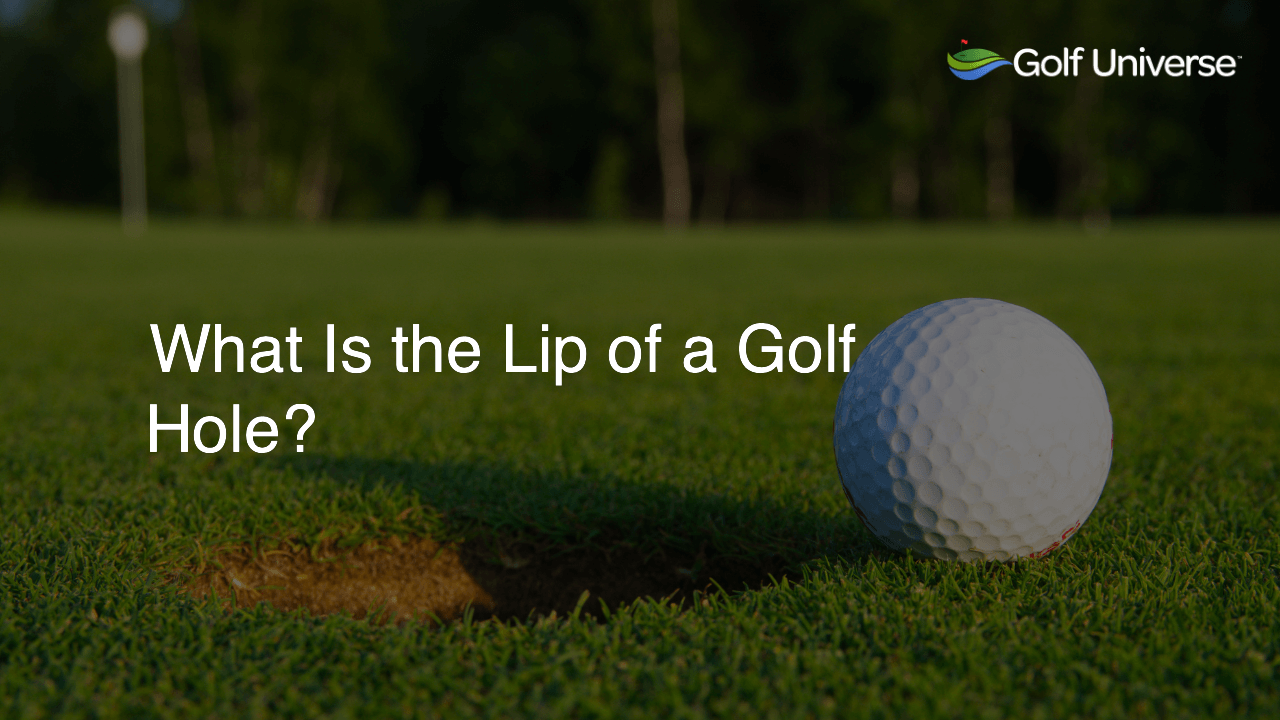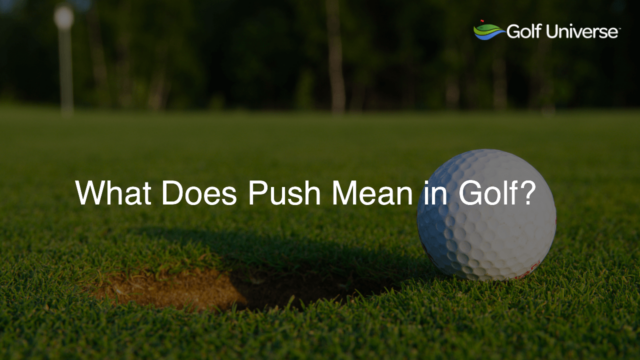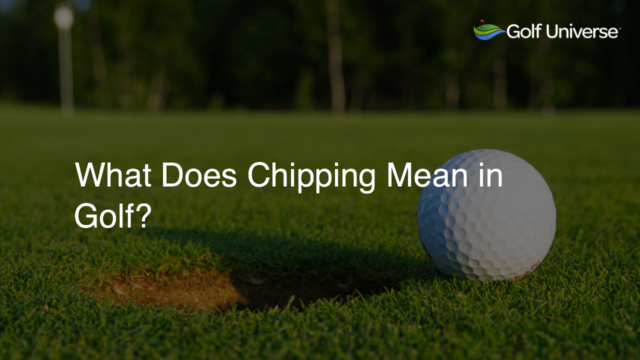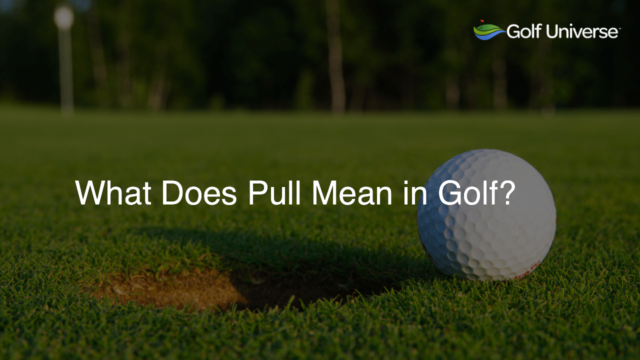The lip of a golf hole refers to the circular edge surrounding the hole on the putting green. It is where the grass transitions into the hole, playing a crucial role in determining if a golfer’s putt will successfully drop into the hole or not.
Understanding the Lip of a Golf Hole
The lip of a golf hole is an essential element of the putting surface, marking the boundary between the hole and the rest of the green. The lip is essentially the transition from the circular cut-out hole to the grass surrounding it. In golf, a putt that drops into the hole is considered successful while any ball that comes into contact with the lip without falling in is deemed unsuccessful.
Significance of the Lip in Golf Performance
The lip plays a critical role in the outcome of a golfer’s shots, particularly putts. When a golf ball encounters the lip of the hole, it can either roll over it and sink into the hole or make partial contact and spin off or ricochet away from the hole. The reaction of the ball upon encountering the lip depends on various factors, such as the speed and trajectory of the ball as well as the condition and firmness of the lip.
Impact of Speed and Trajectory
A golfer’s speed control is vital in ensuring the ball passes the lip and goes into the hole. If the ball travels too fast, it may hit the lip and deflect away instead of dropping in. Likewise, an incorrect line or trajectory can cause the ball to make glancing contact with the lip, resulting in a missed putt.
Condition and Firmness of the Lip
The lip’s firmness and condition can also influence the success of a putt. A well-maintained and firm lip promotes a consistent reaction when the ball makes contact, increasing the chances of a successful putt. On the other hand, a damaged or soft lip may cause the ball to bounce or spin unpredictably, potentially leading to a missed putt even with the correct speed and line.
Maintaining the Lip of a Golf Hole
Proper maintenance of the lip is crucial for ensuring a fair golf experience. Golf course staff should monitor the lip’s condition and make any necessary repairs or adjustments. This may involve redefining the edge of the hole, cutting out excess grass, or ensuring the soil surrounding the hole is firm. Additionally, golfers themselves can play a role in preserving the lip’s condition by carefully removing the flagstick and lifting their ball out of the hole without causing damage.
Lip Management Techniques for a Better Golf Experience
Throughout your golf journey, you may encounter golf greens that have varying conditions. However, good lip management can improve your putting performance substantially. At Golf Universe, a blog about golf, we recommend golfers to be proactive in understanding the golf course conditions and being prepared to adapt their game accordingly. Here are a few techniques for managing the lip of a golf hole:
Adopt a Firm and Consistent Putting Stroke
Precise speed control and accuracy in your putting stroke are parts of the keys to success, especially when dealing with the lip of the hole. Ensure that your stroke is firm and consistent to avoid any unnecessary spin or deflection when the ball encounters the lip.
Survey the Green for an Accurate Aim
Before taking your putt, survey the green and identify the line that will allow your ball to avoid glancing contact with the lip of the hole. Take note of any variations in the grass or imperfections near the hole that may affect your shot.
Importance of Etiquette and Practice in Golf
A considerable aspect of enjoying the game of golf lies in the proper etiquette and sportsmanship displayed both on and off the course. Golf Universe, a blog about golf, highly encourages all golfers to practice good etiquette and respect the course, fellow golfers, and the lip of the golf hole. Be mindful of the previously mentioned practices, like gently removing your ball from the hole and refraining from touching the lip’s edge to avoid unintentional damage.
Consistent Practice for Better Putting Performance
Becoming skilled in dealing with the lip of the golf hole takes time, practice, and patience. Our advice at Golf Universe would be to spend adequate time on putting greens, improving your understanding of how the ball interacts with the lip. Use various golf courses and greens to experience different conditions and learn how to adapt your putting technique for a more consistent and successful golf game.
FAQs About the Lip of a Golf Hole
After learning about the significance of the lip of the golf hole, you may have some questions on the topic. Here are some frequently asked questions and their concise answers to help you further understand the importance and implications of the lip on your golf game.
What is the standard size of a golf hole?
The standard size of a golf hole is 4.25 inches (108 mm) in diameter according to the rules of golf established by the United States Golf Association (USGA) and the R&A.
How can I improve my putting on greens with damaged or uneven lips?
For putting on greens with damaged or uneven lips, focus on proper speed control, accurate aiming, and a consistent putting stroke. You may also consider practicing on a variety of surfaces to become comfortable adapting to different green conditions.
What’s the most common mistake made by golfers when encountering the lip of a golf hole?
The most common mistake made by golfers when encountering the lip of a golf hole is misjudging the speed and trajectory of their putt, causing the ball to glance off the lip instead of sinking into the hole.
How often should a golf course change the location of the hole on the green?
It is typically recommended that a golf course change the location of the hole on the green every 3 to 7 days, depending on factors like foot traffic and turf stress. This helps promote even wear on the green and maintains the hole’s longevity and playability.
How can I practice putting when there’s a risk of damaging the lip of a golf hole?
When practicing putting, consider using various targets outside the hole to simulate different lip conditions and ensure that you adhere to proper etiquette, like avoiding touching the lip’s edge. This will help you gain experience without causing damage to the lip.











